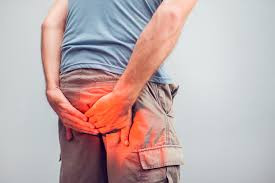Definisi
Saluran cerna dibagi menjadi 2 bagian yaitu saluran cerna bagian atas dan saluran cerna bagian bawah. Saluran cerna bagian atas meliputi mulut, kerongkongan, lambung dan usus halus. Sedangkan saluran cerna bagian bawah meliputi usus besar hingga anus. Perdarahan saluran cerna bagian bawah ditandai dengan munculnya darah pada tinja. Ada berbagai jenis penyakit yang bisa menyebabkan kondisi tersebut. Walaupun tampak mengerikan, darah pada tinja belum tentu sesuatu yang membahayakan nyawa. Ada berbagai penyakit yang dapat menyebabkan perdarahan saluran cerna bagian bawah. Penampakan darah pun dapat menjadi ciri khas utama penyebab perdarahan. Ada darah yang berwarna merah segar, ada juga yang bercampur dengan tinja sehingga menyebabkan tinja berwarna gelap.
Penyebab
Beberapa penyakit yang dapat menyebabkan perdarahan saluran cerna bagian bawah meliputi:
- Hemoroid. Atau yang sering disebut wasir merupakan pembengkakan pembuluh darah yang terjadi disekitar anus.
- Fisura ani. Robekan kecil pada dinding anus yang dapat menimbulkan rasa sakit tajam saat BAB.
- Infeksi usus. Beberapa bakteri dan parasit dapat menyebabkan infeksi usus yang dapat menimbulkan gejala perdarahan saluran cerna bagian bawah seperti bakteri Shigella dysenteriae.
- Kolitis ulseratif merupakan peradangan kronis yang menyebabkan luka dan perdarahan pada saluran cerna bagian bawah. Gejala yang terjadi biasanya berupa sakit perut atau mulas dan BAB bercampur darah yang sedikit-sedikit tapi sering. Selain itu, penderita kolitis ulseratif juga bisa mengalami demam dan penurunan berat badan.
- Polip usus adalah benjolan bertangkai yang tumbuh pada dinding dalam usus besar. Polip pada beberapa kasus dapat membesar dan menimbulkan gejala nyeri perut, sembelit atau diare yang bertahan lebih dari seminggu dan juga perdarahan saluran cerna bagian bawah yang terlihat saat BAB. Darah bisa berwarna merah segar atau bercampur dengan tinja dan membuat tinja berwarna kehitaman.
- Kanker usus besar. Kanker usus besar juga dapat menyebabkan perdarahan saluran cerna bagian bawah. Darah biasanya terlihat bercampur dengan tinja dan bisa berwarna merah segar atau coklat kehitaman. Selain perdarahan, kanker biasa disertai dengan gejala penurunan berat badan yang drastis dan perubahan pola BAB.
- Penyakit lain seperti diverticulitis, kelainan pembuluh darah usus besar dan Crohn disease
Faktor Risiko
Faktor-faktor yang dapat meningkatkan risiko perdarahan saluran cerna bagian bawah adalah:
- Usia. Perdarahan saluran cerna lebih sering terjadi pada orang dewasa usia >60 tahun
- Jenis kelamin. Laki-laki lebih berpotensi mengalami gangguan saluran cerna dibandingkan dengan perempuan
- Penggunaan Obat Anti Inflamasi Non-Steroid (OAINS). Riwayat penggunaan OAINS jangka panjang seperti, Ibuprofen, Piroxicam, Asam Mefenamat meningkatkan risiko perdarahan
- Penggunaan obat pengencer darah (antiplatelet). Hal ini dikarenakan penggunaan obat jenis ini meningkatkan risiko perdarahan menjadi 2x lipat
- Mengonsumsi alkohol
- Merokok
- Diabetes
Gejala
Gejala perdarahan saluran pencernaan bawah dapat berupa:
- BAB berdarah
- Tinja berwarna hitam
- Kram atau nyeri perut
- Pusing
- Kelelahan atau kelemahan yang tidak dapat dijelaskan
- Tampak pucat
- Sesak napas
- Pingsan
- Syok. Jika perdarahan sudah parah, penderita pendarahan saluran pencernaan bisa mengalami syok. Tanda syok di antaranya tekanan darah menurun drastis, susah/ jarang kencing, detak jantung cepat, tangan dan kaki terasa dingin, dan tidak sadarkan diri. Segera bawa pasien ke fasilitas kesehatan terdekat jika mengalami syok untuk mendapatkan penanganan yang tepat dan cepat.
Diagnosis
Diagnosis perdarahan saluran cerna bawah dapat ditegakkan melalui wawancara mendalam (anamnesa) mengenai:
- Gejala yang dialami
- Obat-obatan yang sedang digunakan
- Riwayat kesehatan pasien dan keluarga
Dokter juga akan melakukan pemeriksaan fisik terkait dengan:
- Tekanan darah, denyut nadi dan warna kulit yang dapat membantu menentukan tingkat kehilangan darah
- Pemeriksaan dengan selang hidung (NGT) untuk menentukan perdarahan berasal dari saluran cerna bagian atas (SCBA) atau saluran cerna bagian bawah (SCBB). Cairan yang timbul pada pasien dengan perdarahan SCBB biasanya jernih tidak bercampur darah
- Pemeriksaan berat badan. Penurunan berat badan dalam jumlah besar dalam waktu yang singkat mungkin berhubungan dengan penyakit keganasan (kanker)
- Pemeriksaan fisik menyeluruh pada daerah perut (abdomen). Dokter melakukan pemeriksaan untuk menelaah nyeri perut, kecurigaan adanya gagal hati, maupun kecurigaan adanya pembesaran organ di dalam perut. Benjolan (massa) di abdomen yang teraba juga dapat mendukung adanya penyakit keganasan
- Pemeriksaan daerah anus
Pemeriksaan penunjang lain yang dapat dilakukan pada pasien dengan kecurigaan perdarahan saluran cerna bagian bawah adalah:
- Pemeriksaan feses/tinja. Pemeriksaan ini membantu dalam menentukan penyebab dari perdarahan yang terjadi.
- Pemeriksaan darah. Dokter akan melakukan pemeriksaan darah lengkap untuk melihat seberapa cepat pembekuan darah Anda, jumlah trombosit dan fungsi hati.
- Pemeriksaan saluran cerna dengan selang kamera, seperti endoskopi dan kolonoskopi
Tata Laksana
Prinsip tatalaksana perdarahan saluran cerna bagian bawah yaitu:
- Pergantian cairan yang keluar dengan infus
- Transfusi apabila kadar darah rendah, khususnya komponen darah hemoglobin. Transfusi dipertimbangkan oleh dokter apabila kadar Hemoglobin <7 g/dL
- Obat untuk lambung
Umumnya, penatalaksanaan bergantung penyebab dari perdarahan saluran cerna bawah.
1. Hemoroid dan Fisura Ani. Pada umumnya, kedua penyakit ini dapat sembuh sendiri. Anda dapat melakukan beberapa perawatan rumahan, diantaranya:
- Makan makanan tinggi serat
- Cukupi kebutuhan cairan harian untuk menghindari tinja keras
- Hindari mengejan saat BAB
- Gunakan tisu toilet atau handuk untuk menyeka daerah yang basah setelah buang air agar tidak terjadi iritasi
- Berendam air hangat
- Gunakan krim hemoroid/wasir
2. Infeksi dan Kolitis. Pengobatan kolitis tergantung dari penyebabnya. Jika terdapat infeksi dokter akan memberikan antibiotik. Beberapa terapi yang dapat diberikan, antara lain :
- Obat anti-radang seperti steroid
- Obat imunosupresan (penekan imun)
- Pembedahan
3. Polip dan Kanker Usus. Operasi atau pembedahan merupakan terapi utama pada penyakit ini. Pada kanker terapi kemoterapi dan radiasi mungkin diperlukan baik sebelum atau sesudah operasi tergantung dari tingkat keparahan kanker.
Komplikasi
Perdarahan saluran cerna merupakan penyakit serius yang harus ditangani dengan baik karena dapat berakibat fatal. Komplikasi yang dapat terjadi akibat perdarahan saluran cerna bagian bawah yaitu:
- Anemia
- Gagal napas
- Gagal jantung/serangan jantung
- Infeksi
- Syok
- Kematian
Pencegahan
Ada beberapa hal yang dapat Anda lakukan untuk mencegah terjadinya perdarahan saluran cerna bagian bawah, yaitu :
- Perubahan pola hidup yang sehat dan bersih
- Konsumsi makanan sehat tinggi serat
- Mencukupi asupan cairan setidaknya 8 gelas air putih setiap hari
- Olahraga teratur
- Hindari mengejan saat BAB
- Jangan merokok
- Hindari konsumsi alkohol
Selain itu, perhatikanlah tinja setiap buang air besar agar dapat menyadari lebih cepat apabila terdapat perdarahan atau perubahan warna pada tinja. Tinja yang sehat biasanya berwarna kuning kecokelatan hingga cokelat gelap.
Kapan Harus ke Dokter ?
Segera konsultasikan ke dokter apabila Anda mengalami perdarahan saat buang air besar baik darah yang menetes ataupun tinja yang berwarna lebih gelap. Semakin cepat penyebab perdarahan ditemukan, kemungkinan komplikasi yang timbul juga akan semakin kecil.
Mau tahu informasi seputar penyakit lainnya? Cek di sini, ya!
- dr Nadia Opmalina
National Institute of Health (2020). U.S. National Library of Medicine MedlinePlus. Gastrointestinal Bleeding
Cleveland Clinic (2018). The Structure and Function of the Digestive System.
WebMD (2020). Bleeding in the Digestive Tract: Why It Happens.
DiGregorio A, Alvey H. Gastrointestinal Bleeding [Internet]. Ncbi.nlm.nih.gov. 2022. Available from: https://www.ncbi.nlm.nih.gov/books/NBK537291/












